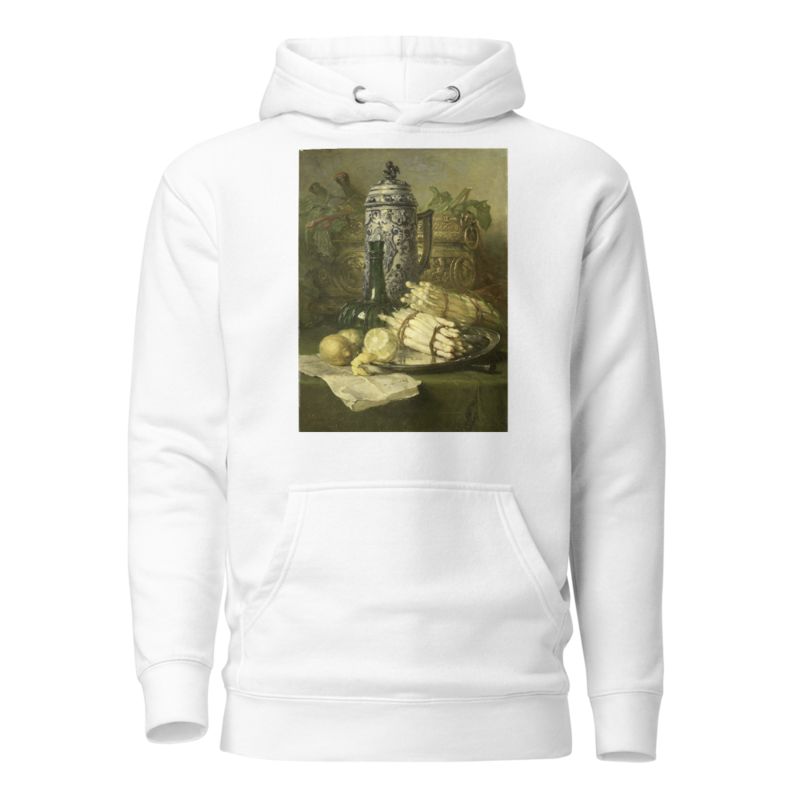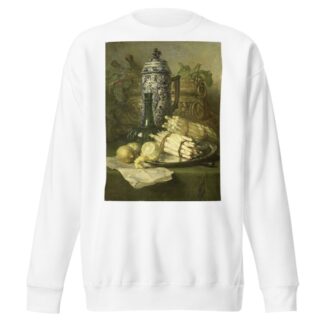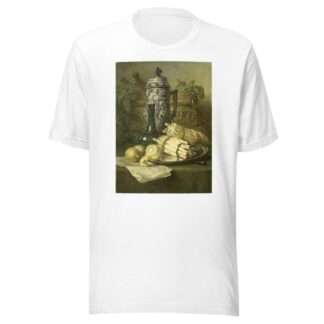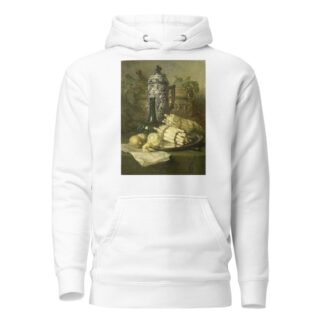Description
Stilleven met kan van steengoed by Maria Vos printed on a Hoodie
About the Hoodie
Modern fit
It provides a more tailored look than a regular fit
Comfortable
The fabric and fit of this item are extra comfy
Tear-away tag
Easily removable tear-away tag that allows you to add a custom inside label
Premium quality
The product is made from premium, high-quality materials
Classic unisex hoodie with a front pouch pocket and matching flat drawstrings. The 100% cotton exterior makes this hoodie soft to the touch.
- 65% ring-spun cotton, 35% polyester
- Charcoal Heather is 60% ring-spun cotton, 40% polyester
- Carbon Grey is 55% ring-spun cotton, 45% polyester
- 100% cotton face
- Fabric weight: 8.5 oz./yd.² (288.2 g/m²)
- Front pouch pocket
- Self-fabric patch on the back
- Matching flat drawstrings
- 3-panel hood
- Tear-away tag
Maria Vos (1824-1906)
Maria Vos was a Dutch still-life painter.
She was born to the family of a stockbroker. She originally studied what would now be called “home economics” at a French boarding school in Weesp. But, as was common for upper-class young ladies at the time, she also received drawing lessons, from Christiaan Andriessen. Later, she studied painting with Petrus Kiers. In 1844, she had a showing at the Exhibition of Living Masters and, in 1847, became an honorary member of the “Royal Academy of Fine Arts” in Amsterdam.
She worked there until 1853, when she moved to Oosterbeek and joined a group of painters known as the Hollandse Barbizon. In 1863, her friend, Adriana Johanna Haanen, the sister-in-law of her teacher, Kiers, joined her there. Seven years later, they built a home known as the “Villa Grada”, where they gave drawing and painting lessons. Haanen died in 1895, but Vos remained and became one of the last artists in residence there. On her eightieth birthday, she received a personal tribute from seventy members of Arti et Amicitiae.
Although Vos is primarily known for still lifes, she also did portraits, landscapes and cityscapes, including a series of watercolors depicting Oosterbeek. She mostly exhibited in the Netherlands and Belgium, but also had a showing at the Centennial Exposition in Philadelphia. Much of her work has been lost (or misplaced), but due to the sheer quantity of her output, much remains. Major retrospectives of her work were held in 1973 and 2002.






Reviews
There are no reviews yet.